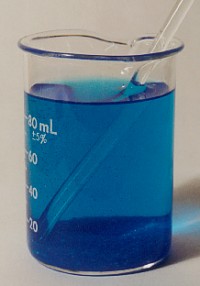 I was thinking of a title for this Blog, and I thought long and hard about whether I should use the adjective "Biomedical" or "Medical". The purpose of this Blog is two-fold. First I wanted to provide my own perspective on a collection of articles that appeared in the New Scientist (special edition on Medical Frontiers, Collections Volume 10, 2015). My second objective is to take stock as the Life Sciences UTC at Liverpool reaches an important milestone: Students who entered in 2013 are now sitting their GCSE examinations, completing BTEC submissions, or are in the early stages of their A Level examinations. By the end of July, our first cohort of Y12 recruits will be leaving for work or University (I'll abbreviate this to HE, for Higher Education). I therefore thought it might be instructive to reflect on the experiences in the Innovation Labs at the UTC, which have been developed to prepare students for their next step in the Life Science sector (work or HE), using the New Scientist Collection as an independent "forecast for the future of Medicine", allows me to see whether we our approach at the UTC matches their predictions. In the end, I felt that my focus was best defined by the application of Science in Medicine, and so I selected "Medical". The content is drawn from my UTC experiences and my own
I was thinking of a title for this Blog, and I thought long and hard about whether I should use the adjective "Biomedical" or "Medical". The purpose of this Blog is two-fold. First I wanted to provide my own perspective on a collection of articles that appeared in the New Scientist (special edition on Medical Frontiers, Collections Volume 10, 2015). My second objective is to take stock as the Life Sciences UTC at Liverpool reaches an important milestone: Students who entered in 2013 are now sitting their GCSE examinations, completing BTEC submissions, or are in the early stages of their A Level examinations. By the end of July, our first cohort of Y12 recruits will be leaving for work or University (I'll abbreviate this to HE, for Higher Education). I therefore thought it might be instructive to reflect on the experiences in the Innovation Labs at the UTC, which have been developed to prepare students for their next step in the Life Science sector (work or HE), using the New Scientist Collection as an independent "forecast for the future of Medicine", allows me to see whether we our approach at the UTC matches their predictions. In the end, I felt that my focus was best defined by the application of Science in Medicine, and so I selected "Medical". The content is drawn from my UTC experiences and my own perspective on the future "landscape" of medicine, drawing on the New Scientist Special Edition and other cited resources.If you haven't come across the word triptych (RHS) before, it is similar to a trilogy, but usually used in the art world, to describe 3 linked pieces of work.(Unfortunately, someone much smarter than me came up with the headline "Wearing your heart on your sleeve!", and not wanting to plagiarise, I settled for the above title).
perspective on the future "landscape" of medicine, drawing on the New Scientist Special Edition and other cited resources.If you haven't come across the word triptych (RHS) before, it is similar to a trilogy, but usually used in the art world, to describe 3 linked pieces of work.(Unfortunately, someone much smarter than me came up with the headline "Wearing your heart on your sleeve!", and not wanting to plagiarise, I settled for the above title).The sections in the New Scientist are as follows:
- Diagnosis
- Fighting Infection
- Drug Hunting
- Cancer
- Regeneration
- Emergency Room
- Brains and Wiring
- Digital Doctor
I shall weave these areas into the 3 parts of the Blog, as follows
Part 1 Introduction, Diet, Diagnosis and Fighting infection
Part 2 Drug Hunting and Cancer
Part 3 Regeneration and Rewiring , with a section on the Digital Doctor and a final discussion
I thought I would begin with a comment on diet/nutrition, which isn't covered
by New Scientist. I will also leave the "Emergency Room" alone, since the Healthcare team at the UTC are much more knowledgeable on such matters, but I couldn't resist the Digital Doctor (well, mainly wearables)!
I also asked the question: "why should we care if people get ill?" And whilst I can understand that there may be an evolutionary driver for individuals to protect their own family members, why should society be driven to cure sick people? Interestingly, students were a little uncomfortable with any suggestion that we should neglect the sick amongst us. I think the conversations provided an interesting platform for starting the Innovation Lab projects.
You can see the kind of advice the Government dishes out (couldn't resist!) in respect of healthy food, at the NHS Choices web site. In relation to this topic, in one of the first Innovation Lab projects at the UTC for Y10s and Y12s, we explored a range of methods and skills in proteomics, by investigating the properties of milk, together with the isolation of natural products from fruit and vegetables in order to test their therapeutic value in treating infectious diseases and as potential sources of new antibiotics. Maybe these were subliminal messages, but I hope that when you leave the UTC, you will all be in a better position to assess the risks of not eating a balanced and healthy diet. Now let's move on to the topic of diagnosis in the future.
 Diagnosis and Diagnostics. The principles of Diagnosis go back a long way, from Chinese Traditional Medicine, through Egyptian Medicine, the traditions of Babylonia, through the usual Greek suspects. The word diagnosis is a combination of the Greek words, dia [apart] and gignoskein [recognise], which simply means distinguish or discern. This next quotation is for me the beginning of contemporary diagnosis, but we should not forget the critical role played by the doctor's careful observation of eyes, ears, complexion, mouth, temperature, urine etc etc. It is (as I am always saying) critical to make detailed observations in Science; and the same is just as true in Medicine. Just a thought: observation is probably more important in veterinary practice, since pets usually only talk to their owners, not the vet! Back to the quotation:
Diagnosis and Diagnostics. The principles of Diagnosis go back a long way, from Chinese Traditional Medicine, through Egyptian Medicine, the traditions of Babylonia, through the usual Greek suspects. The word diagnosis is a combination of the Greek words, dia [apart] and gignoskein [recognise], which simply means distinguish or discern. This next quotation is for me the beginning of contemporary diagnosis, but we should not forget the critical role played by the doctor's careful observation of eyes, ears, complexion, mouth, temperature, urine etc etc. It is (as I am always saying) critical to make detailed observations in Science; and the same is just as true in Medicine. Just a thought: observation is probably more important in veterinary practice, since pets usually only talk to their owners, not the vet! Back to the quotation:"our chemical individualities are due to our chemical merits as well as our chemical shortcomings; and it is more nearly true to say that the factors which confer upon us our predispositions to and immunities from various mishaps which are spoken of as diseases, are inherent in our very chemical structure; and even in the molecular groupings which confer upon us our individualities, and which went into the making of the chromosomes from which we sprang".
This is taken from a famous book entitled "Inborn Factors in Disease", by Sir Archibald Garrod, a household name I assume? (Try Googling "one gene, one enzyme hypothesis" of Beadle and Tatum: it has its roots in Garrod's ideas) What is more surprising is that this was written over 100 years ago and, together with the patient observation methodologies pioneered by William Osler, has remains essentially unchanged today. If you are interested in the history of diagnosis, follow this link to a pdf.The only difference, over one hundred years on, is the technology and a deeper (molecular) understanding of disease mechanisms. A visit to your doctor today to try and get help for "flu-like" symptoms, may trigger a urine, blood and/or oral swab sample.
 The presence of abnormal biomolecules including metabolites or proteins in body fluids can provide an indication of the cause of the symptoms. Think of diabetes (mellitus). Here, the disease is caused by the abnormal accumulation of glucose in the blood. This is either a result of a loss of insulin production by the pancreas or an inability of the body to respond properly to insulin. Biochemically, diabetes is the result of: insufficient insulin, abnormal insulin or an insufficient number of insulin receptors, or their malfunction. The presence of glucose is currently self-monitored by obtaining a blood drop (skin puncture) and a dip-stick coated with an enzyme that converts glucose, indirectly to a coloured molecule. What does the future hold? The Wang lab at University College (Sand Diego, UCSD) has been at the forefront of electronics and biosensors (Nano-Bio-Electronics, NBE); and his lab home page is a great place to start looking! One recent highlight has been the development of a glucose sensing "tattoo". The drivers behind such developments include empowering individuals, and thereby preventing a clinical crisis, which of course reduces the financial burden on the healthcare system. I would imagine that such systems might develop alongside the new trend in wearables, such as the apple watch. There is a nice infographic of the mechanism of enzyme linked amperometric glucose sensing here. It seems to me that the three-way convergence of biochemical analysis, microelectronics and wearable digital technology will be a regular feature in the next five years. The close collaboration between the Liverpool Life Sciences UTC and the Studio School couldn't be better placed to prepare students for these exciting developments in the medical sciences.
The presence of abnormal biomolecules including metabolites or proteins in body fluids can provide an indication of the cause of the symptoms. Think of diabetes (mellitus). Here, the disease is caused by the abnormal accumulation of glucose in the blood. This is either a result of a loss of insulin production by the pancreas or an inability of the body to respond properly to insulin. Biochemically, diabetes is the result of: insufficient insulin, abnormal insulin or an insufficient number of insulin receptors, or their malfunction. The presence of glucose is currently self-monitored by obtaining a blood drop (skin puncture) and a dip-stick coated with an enzyme that converts glucose, indirectly to a coloured molecule. What does the future hold? The Wang lab at University College (Sand Diego, UCSD) has been at the forefront of electronics and biosensors (Nano-Bio-Electronics, NBE); and his lab home page is a great place to start looking! One recent highlight has been the development of a glucose sensing "tattoo". The drivers behind such developments include empowering individuals, and thereby preventing a clinical crisis, which of course reduces the financial burden on the healthcare system. I would imagine that such systems might develop alongside the new trend in wearables, such as the apple watch. There is a nice infographic of the mechanism of enzyme linked amperometric glucose sensing here. It seems to me that the three-way convergence of biochemical analysis, microelectronics and wearable digital technology will be a regular feature in the next five years. The close collaboration between the Liverpool Life Sciences UTC and the Studio School couldn't be better placed to prepare students for these exciting developments in the medical sciences.
Detecting infectious agents. The link between wearables in health management and infectious diseases was made clear to me during my sabbatical leave at the Liverpool School of Tropical Medicine. As an institution with a primary focus on translating science into society, with a mission directed at some of the poorest and most challenging locations in the world. The senior team at LSTM: Janet Hemingway and Steve Ward, have been keenly aware of the need to integrate developments in diagnostics and smart phone technologies for some time. Even before attempts to develop sophisticated screening methods (as above), the incorporation of "dumb" phones as a means of communication between clinics and patients to issue reminders for medication etc., has been on the LSTM's radar for some time. Dr. Mark Paine, a biochemist at the centre of one such initiative to develop robust and sensitive diagnostic assays in the fight against malaria is increasingly, factoring in the downstream requirements of the technology "in the field". Some of these portables, wearables and general mobile devices will be used in extreme and remote areas, where battery life is a premium. Such electronic needs are similar to the kinds of factors that ultimately determine whether a promising new "drug" makes it to the pharmacists shelf. You can read about the work in Mark's laboratory here and the LSTM's translational work in their Vision document.
An example of the "pipeline developments" for detection of infectious diseases are exemplified by the Q-POC hand-held instruments from Quantum Diagnostics. Here, the aim is to screen for a range of malaria infection types using a microfluidic device that incorporates DNA extraction and gene specific ID via a high speed (5minues) PCR method. I expect the science behind the selection of probes and DNA extraction is robust, but the challenge with such devices is often the limitations of the power supply and battery life. However, I am sure these issues will be overcome in the near future. I hope this has whetted your appetite for the future and I believe our programmes in the Innovation Labs will prepare students for these exciting challenges.
In Part 2, I shall look at the future of the Pharmaceutical challenges in the hunt for new drugs, including antibiotics and in meeting the challenge of cancer.

























